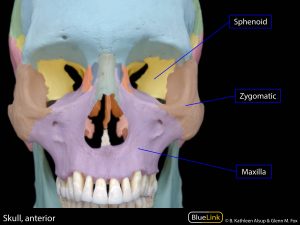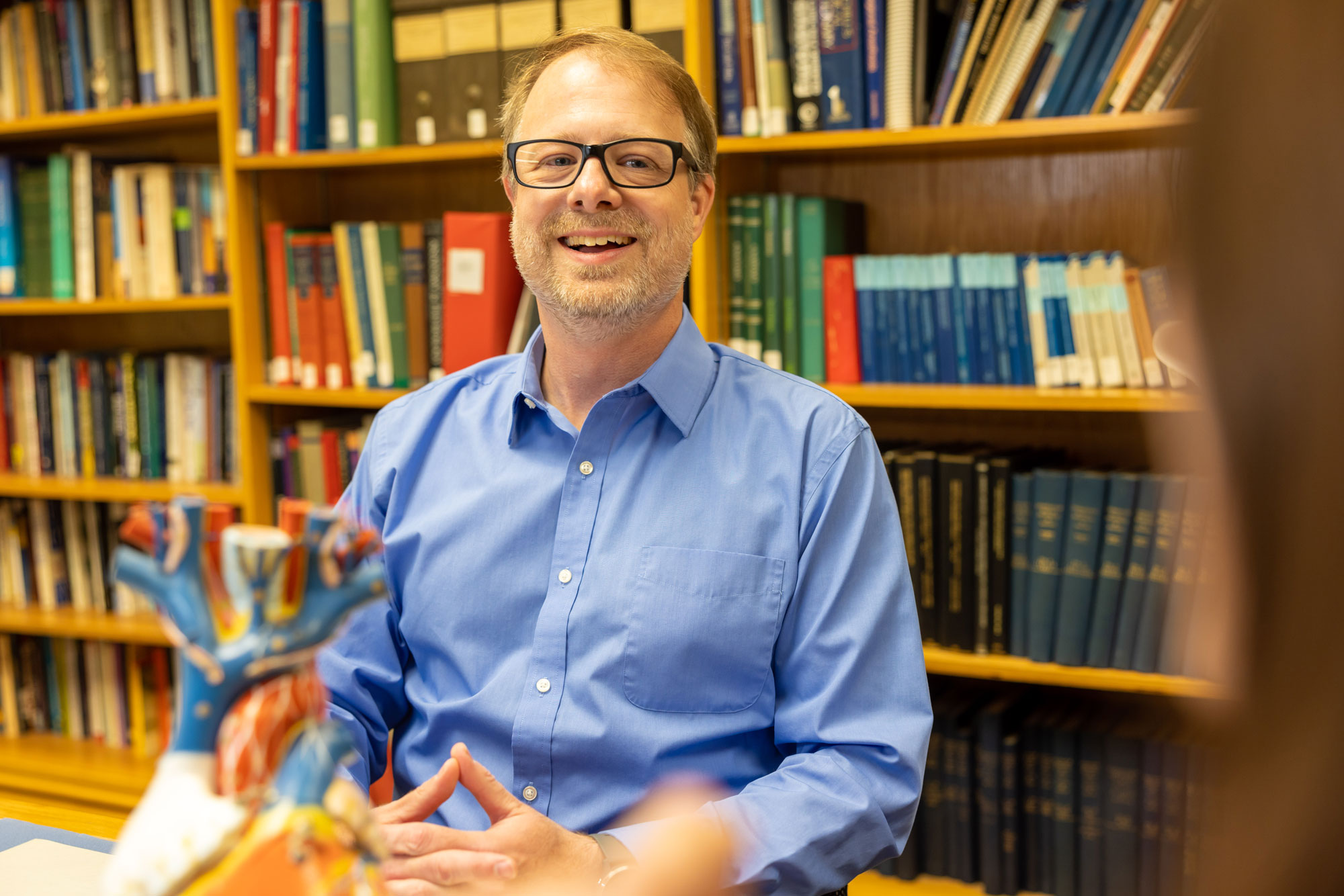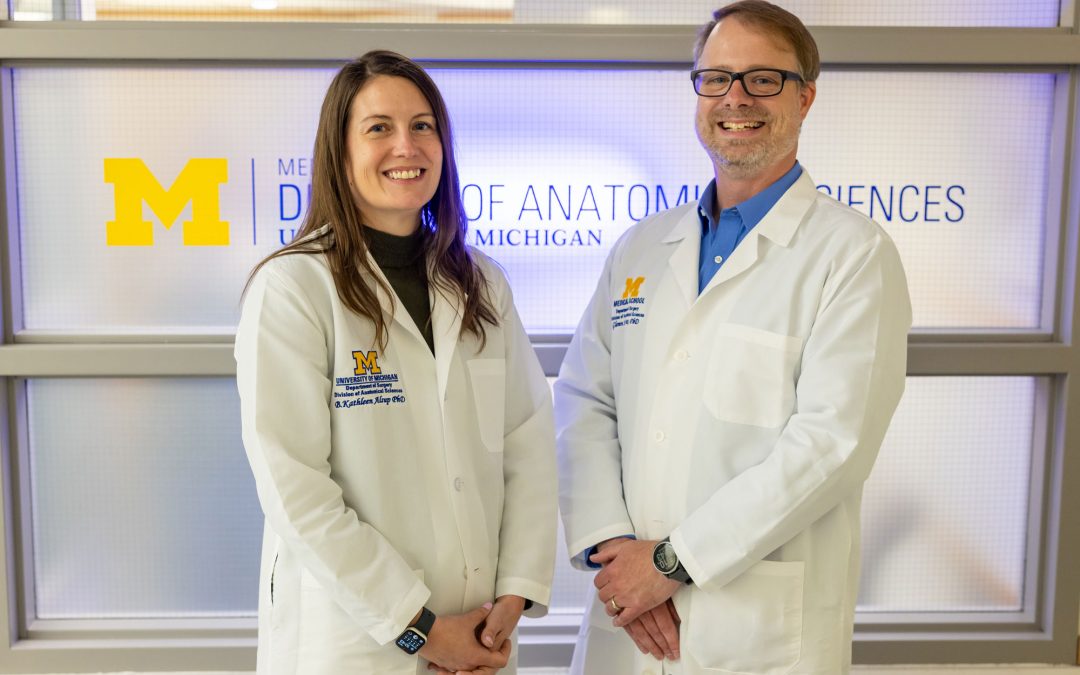The online, multimedia-based resource, a creation of Dr. Glenn Fox and Dr. B. Kathleen Alsup, is a free tool available to anyone working with human anatomy. Fox is receiving additional support through the RISE Innovation Development Program to bring eXtended Reality (XR) learning to the tool. The project was originally funded through the Center for Research on Learning & Teaching’s (CRLT) Whittaker Fund.
Back in 2014, Glenn Fox, Ph.D. and B. Kathleen Alsup, Ph.D. were relatively new faculty in the Division of Anatomical Sciences (DAS). They wanted to incorporate high quality multimedia learning materials into their teaching, free from the restraints of copyright. Fox, director of the Anatomical Donations Program and a lecturer IV in the DAS, and Alsup, director of Anatomical Sciences, were at the early stages of development of what is today known as BlueLink.
Creating BlueLink
BlueLink is a multimedia-based education resource that includes photography, videography and virtual reality (VR) learning resources from anatomical donors, along with comprehensive lab manuals and interactive files with click-to-reveal testing capabilities. It is available for anyone at Michigan Medicine who uses human anatomy for teaching, learning, research or interacting with patients. The materials are also free to users around the world.
“Our goal was to provide our students with the material that we would want as students, to provide ourselves and our colleagues with the material that we would want to teach with, and then to be able to share everything with the world,” said Fox.
Their initial idea involved attaching barcodes to physical anatomical specimens that when scanned by students in the lab, would open instructional videos featuring faculty members walking them through the major features of the specimen. But the barcodes wouldn’t scan due to an application error and with no formal training in videography, the content had low production value.

An image from BlueLink featuring a skull with a simple labeling system
Today the pair is focusing on expanding the resources available through BlueLink by using eXtended Reality (XR), an umbrella term that includes VR, augmented reality and mixed reality. Inspired by the enthusiasm of a medical student and the recognition that not all students are scheduled for all lab dissections, these new resources offer a highly realistic alternative when in-person learning isn’t an option, such as during the COVID-19 pandemic.
Working with RISE
To develop these XR resources, the team secured funding from the CRLT Whittaker Fund and Fox applied to the RISE Innovation Development Program. As an Innovator in this 12-month program, Fox receives support through monthly workshops, individual meetings with the RISE Core Team and leadership coaching that will help support the ongoing development of BlueLink.
“I really appreciate the monthly sessions the most, in that the focus isn’t on me, the focus is on the process,” Fox shared.
“It’s really nice to see the bigger picture and to understand that the pathway of innovation is something that you can be very intentional about and you can support that innovation, its development, and its implementation and assessment through a number of different practices,” he said.
He also appreciates being able to receive and reflect on feedback he receives through RISE, which is helping chart a path forward.
“I think that in the absence of RISE, you might have an individual who hits a wall, who doesn’t know where to go to next, who doesn’t know what type of expertise they can leverage or if that expertise even exists in our organization, and RISE helps you to not only see that but to make those connections.”

Fox discusses the impact of BlueLink as an educational tool.
Service and impact
BlueLink is primarily used by first year medical students with additional usage from first year dental students, residents or any learner who wishes to study anatomy at Michigan Medicine. Globally, the BlueLink website saw 270,000 users over the last calendar year, primarily from within the United States but reaching as far away as South Africa and the Philippines. While many excellent anatomy tools and apps exist, BlueLink is unique in that its resources are free for educational and non-commercial use, making it a novel innovation within the field.
“Being of service, being useful to another person is something that is essential to my own feelings of happiness and satisfaction. One of the great things about working at Michigan Medicine is that I may work in the service of others,” Fox shared. “We recognize that we’re very privileged in having a donations program and access to these donors, and that many places do not. Being able to create resources for our students and then share them with the world could be a wonderful solution for programs where they don’t have anatomical donors.”
To stay informed about RISE opportunities and education innovation happening at Michigan Medicine, join our community.
Photo credits: Camren Clouthier
